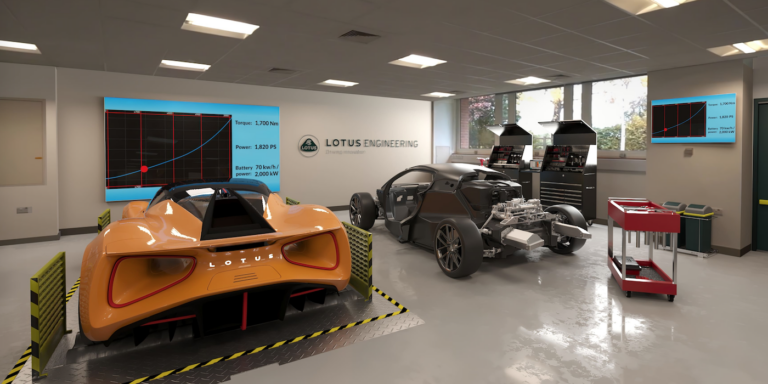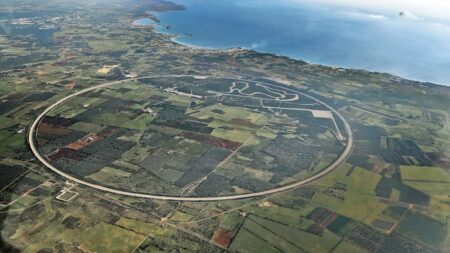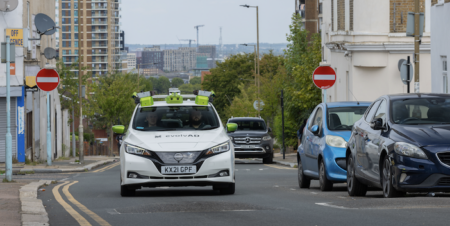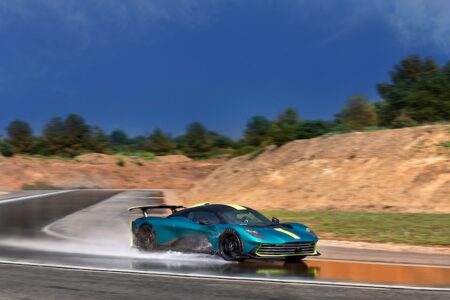Lotus Engineering, the consultancy side of the Lotus business, reports that it is going ‘from strength to strength’ under the company’s Vision80 transformation strategy. This long-term business strategy is divided into three pillars: delivering results every year, revolutionising the product range, and transforming the entire business. The strategy is so-named as it was first conceived in 2018 – the 70th anniversary of the founding of Lotus – with a goal of defining what the company should look like on its 80th anniversary.
A major development at Lotus Engineering is its transition to a new headquarters featuring a high-voltage development and testing centre. Announced last year, the Lotus Advanced Technology Centre (LATC) is being built at the Wellesbourne campus of the University of Warwick in the UK’s Midlands region – a focal point for automotive and engineering innovation. More than 100 employees will be based at the site initially, with capacity for another 200 when the facility’s development is complete.
While the consultancy’s full client list is confidential, it has released a few headline partnership projects, which include:
JBXE: Lotus Engineering is technical partner to JBXE, the Extreme E race team launched by former F1 world champion, Jenson Button
British Cycling: Lotus Engineering is leading the design of an aerodynamic profile for the new track bike to be ridden by Team GB athletes at this summer’s Tokyo Olympics
Project LEVA (Lightweight Electric Vehicle Architecture): A collaboration led by Lotus Engineering that is targeting the acceleration of and innovation behind new lightweight structures for next-generation battery electric vehicles
Project BattCon: Lotus Engineering has launched a pilot containerised battery testing facility to assess energy storage solutions for the EV sector. It means the consultancy can carry out various battery cell, module and pack characterisation tests, performance evaluations, and component and lifetime testing under controlled conditions for its clients.
Further growth for Lotus Engineering is being driven by access to the four new Lotus structural architectures. Working with colleagues in Europe and China, Lotus engineers have developed a range of structural platforms for the brand. Exclusive to Lotus within the Geely group, they are available to other OEMs through the Lotus Engineering consultancy.
Sports car architecture: Referred to internally as the Elemental architecture, this is the platform on which the all-new Lotus Emira will be built. Flexible, lightweight and featuring Lotus-developed extruded aluminium technology, this sports car platform is what the consultancy calls “a massive step-change technically”
Hypercar architecture: The Lotus Evija is the first vehicle to be built on the Extreme platform and goes into production later this year at the Hethel site
Premium architecture: The first global automotive architecture from Lotus, the Evolution platform will be the basis for an all-new range of lifestyle vehicles from the company. The architecture has been defined and designed in the UK, supported by work with teams in China, Sweden and Germany
Electric sports car architecture: The Lotus Engineering consultancy is leading development work on a new vehicle platform – known internally as E-Sports – and from that will come new products for Lotus and Alpine. However, it is also commercially available for other OEMs to use
A new technical roadmap for Lotus will also help guide the work of consultancy. Dubbed EAS-IP – it recognises the automotive sector’s growing demand for technology.
Electrify: A pure electric future for Lotus, as first demonstrated by the Evija hypercar, has been part of the Vision80 strategy from the start. After the Type 131 product line, every new Lotus car will be electric
Amplify: Delivering innovative and engaging technologies to grow the popularity and enjoyment of technology in its new product range. In tandem with the Lotus DNA ‘For The Drivers’, Amplify aims to drive the desirability of future models
Simplify: It was Lotus founder Colin Chapman who famously said the key to performance was to ‘simplify and add lightness’. The legacy lives on, with Lotus aiming for its technology to simplify the driving and ownership experience
Intensify: With every new product launch, the role of Human Machine Interface (HMI), User Interface (UI), and User Experience (UX) technology will be intensified
Personify: Lotus will use technology to give its new models an identity, a brand character that will become part of the company’s DNA. Lotus cars will be customisable through technology, mirroring and adapting to each customer’s tastes
Richard Moore, executive director of engineering at Group Lotus said, “This is a hugely exciting time for Lotus Engineering. News of the transformation of Lotus is common knowledge across the automotive world, and the consultancy is in great demand from clients eager to tap into the passion, expertise and commitment which has run through this consultancy for more than 40 years.”





